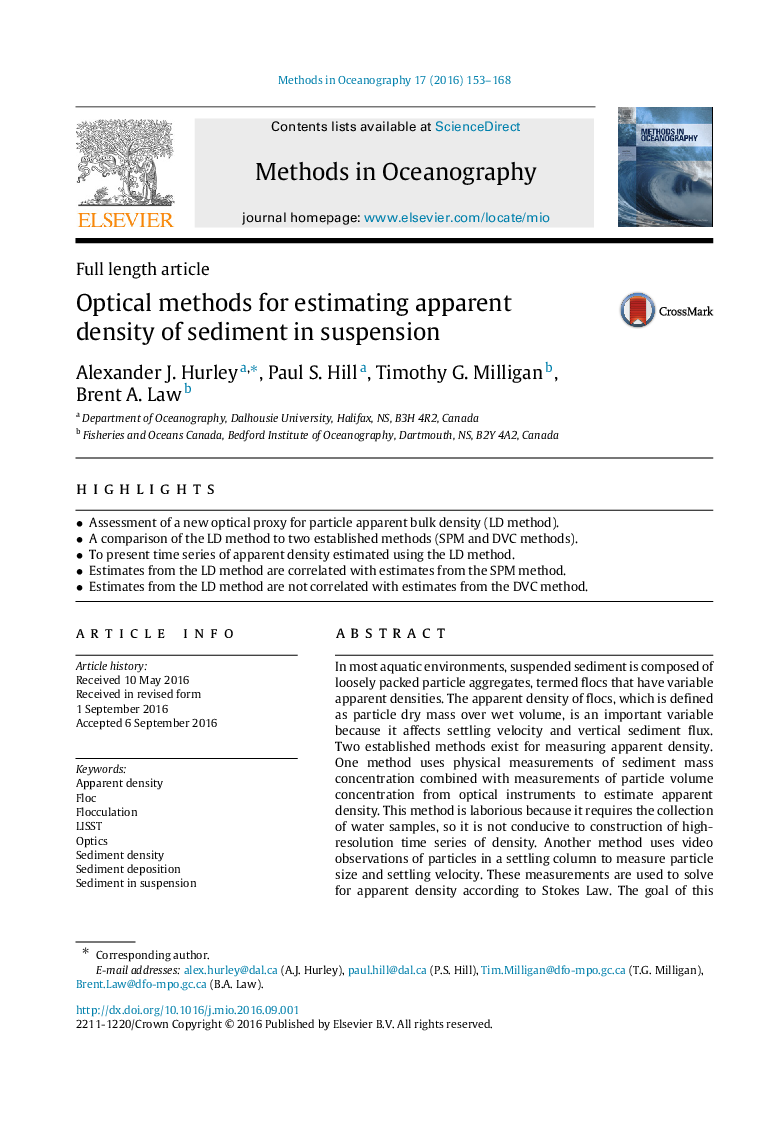| Article ID | Journal | Published Year | Pages | File Type |
|---|---|---|---|---|
| 8060389 | Methods in Oceanography | 2016 | 16 Pages |
Abstract
In most aquatic environments, suspended sediment is composed of loosely packed particle aggregates, termed flocs that have variable apparent densities. The apparent density of flocs, which is defined as particle dry mass over wet volume, is an important variable because it affects settling velocity and vertical sediment flux. Two established methods exist for measuring apparent density. One method uses physical measurements of sediment mass concentration combined with measurements of particle volume concentration from optical instruments to estimate apparent density. This method is laborious because it requires the collection of water samples, so it is not conducive to construction of high-resolution time series of density. Another method uses video observations of particles in a settling column to measure particle size and settling velocity. These measurements are used to solve for apparent density according to Stokes Law. The goal of this study is to develop a new method that uses the ratio of particulate beam attenuation to particle volume to estimate apparent density of sediment in suspension. Data from five studies are used to compare density estimates with the new method to the previous methods. The new optical method produces apparent densities that are correlated linearly with measurements of the ratio of dry mass to wet volume. However, the new optical method produces density estimates that do not correlate with video estimates of apparent density. This lack of correlation is due to sampling bias of the video method, which has a relatively large lower limit of resolution in particle size. Development of a higher resolution camera would eliminate the current bias in particle size and would enable further assessment of the new optical method as an accurate proxy for apparent density.
Related Topics
Physical Sciences and Engineering
Earth and Planetary Sciences
Oceanography
Authors
Alexander J. Hurley, Paul S. Hill, Timothy G. Milligan, Brent A. Law,
